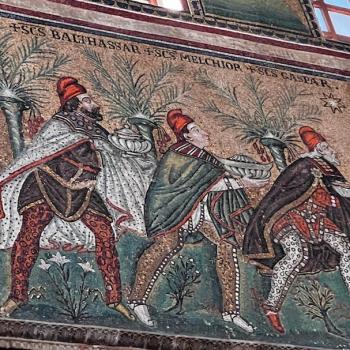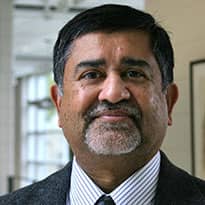The chanting of the Gayatri mantra is said to dispel ignorance and darkness and let one see the spiritual Sun. It enables one to realize the oneness of life. Consisting of three parts - praise (Om, the mystic word composed of the three sounds: aa, u, mm), meditation (tat savitur varenyam, bhargo devasya dheemahi—the lustrous, splendorous, radiant, glorious God Savita), and prayer (dhiyo yo nah prachodayaat—who may stimulate our prayers)—the mantra is said to enable the awakening of the Divine and the strengthening of the human intellect, which then can perceive unity in diversity. The knowing of this universal truth takes place at three levels: the intellectual, the intuitional, and the Real. There are three parts to the Gayatri mantra, with the first one said to prepare the mind of the person reciting the mantra. The second part stimulates in the aspirant an intense desire to come in contact with Savita, the presiding deity of our solar system, and the third part is meant to create the attitude of self-surrender, which is essential for the reception of divine grace.
These days there are many who have heard of the Gayatri mantra, and there are all kinds of recordings, including the Indian cinematic renderings by artistes who seem to know little of the power and grace of the mantra. A traditional rendering of the mantra can be found here.
In closing, it is best that those interested in learning the Gayatri mantra do so from a traditional teacher. There is a science to chanting mantras, and there is a history of people misusing these mantras for their own, selfish and short-term ends. Taimni cautions us by saying that the "application of any science for personal and especially for evil purposes is always attended with dangers of various kinds and, as a safeguard, it is necessary to employ many devices which can guard the aspirant against those dangers" (p. 34).
The one, true goal of Mantra Yoga is the unfolding of our spiritual and real self. Mantra Yoga enables us to understand that this material universe, which seems solid and real, " . . . are not what they seem but are merely the result of the interplay of different kinds of energies and consciousness" (p. 35). Here then is the beautiful and transcendent Gayatri mantra, and its meaning translated by one of modern India's great philosophers, Dr. S. Radhakrishnan:
Om bhur bhuvah suvah
Tat savitr varen(i)yam
Bhargo devasya dheemahi
Dhiyoh yo nah prachodayaat
"We meditate on the effulgent glory of the divine Light; may he inspire our understanding."





